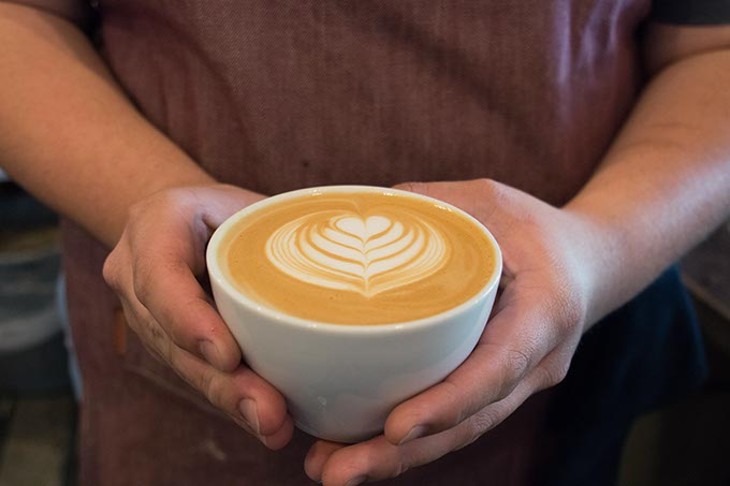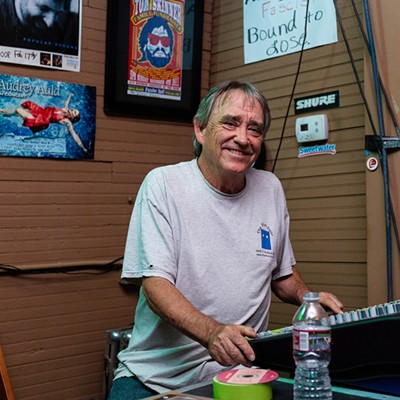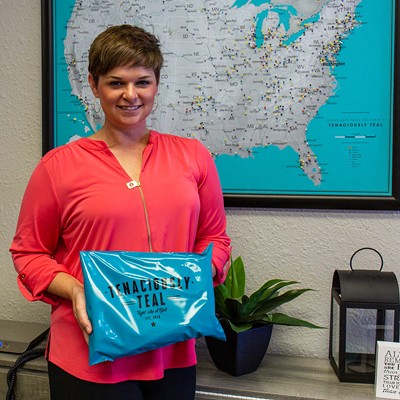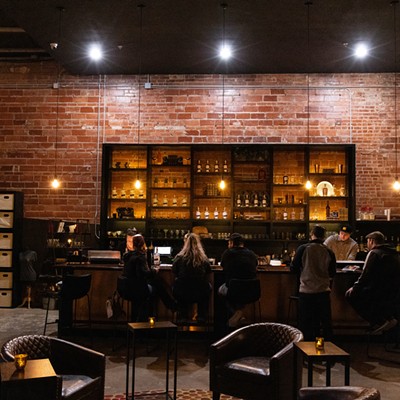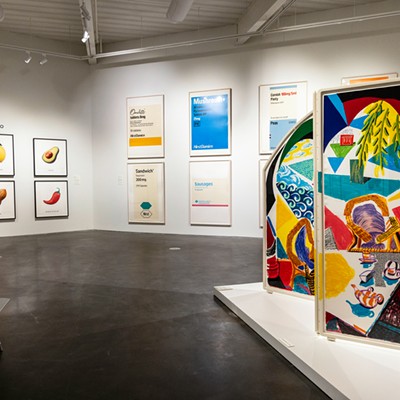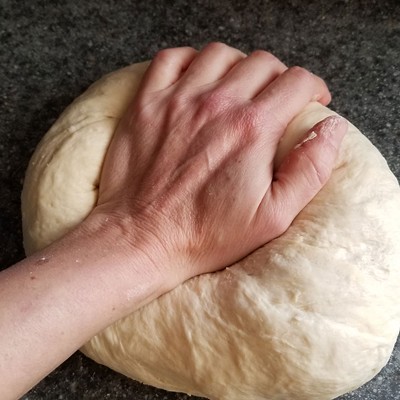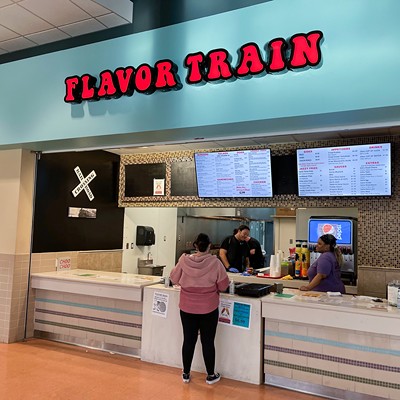An 8 oz. cup of coffee has about 95 mg of caffeine while caffeine pills range from 50 to 200 mg. So coffee might wake us up, but that’s not the only reason people drink it. Coffee is a morning ritual, like taking a shower and brushing your teeth — except we wouldn’t put up with bitter toothpaste and lukewarm shower water every day. So why do we keep drinking bad coffee?
From a business standpoint, it would make more sense for Elemental Coffee Roasters barista trainer Scotty Worley to keep his coffee tips a secret. Instead, he has kindly shared a handy primer on making the best cup of joe at home.
Beans and roasts
“The coffee we use here is different than most people use at home,” he said.
Grocery store coffee is designed to sit on shelves for months at a time, which affects the way it’s produced, Worley said. Freeze-dried, vacuum-packed bags of pre-ground coffee are geared toward survival during transit and storage.
“Cafes like ours can focus on freshness,” Worley said. “The coffee we use was roasted less than a week ago.”
Choosing the right roast comes down to personal choice. Those raised on Starbucks tend to like darker roasts and might prefer the full-bodied chocolatey flavor of Elemental’s Vaquero cowboy blend.
Many coffee shops roast beans lighter than what’s available in grocery stores, such as Ethiopian coffee blend Purusha with notes of strawberry and vanilla.
A good middle-of-the-road coffee is medium roast Saucha, which Worley described as “complex, but approachable.”
For espresso lovers, Elemental produces Purusha SOE (single origin espresso) with a thicker body that spends a little more time in the roaster. A more straightforward blend is the shop’s Espresso 228, made with Brazilian, Ethiopian and Papua New Guinean beans.
Grind on
Coffee’s flavor comes from oils inside the beans. Roasting changes the flavors, but until they’re broken open, the beans can retain most of them. Once the coffee is ground, however, the clock starts ticking. The oils can oxidize, gaining unpleasant flavors, and evaporate.
Buying fresh beans is integral, but grinding coffee before each brew can make a big difference too, Worley said. However, if you’re a pretty consistent coffee drinker, asking the roaster to grind a bag for you can save time without sacrificing much flavor.
The size of the grind makes a difference in the final product, too. The surface area of the beans impacts which flavors are pulled from the coffee and how long it should be brewed.
A smaller grind is good for quick extraction methods, like pulling espresso shots. A slightly larger grind works well with pour-over coffee makers, and a coarser grind is best with longer brewing methods, such as when using a French press.
If your coffee-making method changes day to day, it is worth investing in a small burr grinder. Worley recommended Baratza electric grinders and Hario manual grinders. Choose burr over blade grinders, though. Blades tend to make for an uneven grind size.
Better water
“If you’re going to use tap water for coffee, it at least needs to be filtered,” Worley said. “A lot of larger coffee chains actually bring in filters and test for water standardization to make sure every cup tastes the same.”
It might seem like distilled water is best, but Worley said water requires some mineral content to make a good cup.
According to the Specialty Coffee Association of America, the ideal Total Dissolved Solids (TDS) level of water for coffee is 150 parts per million. If the TDS is too low, water can extract too much from the grounds, giving the resulting beverage a bitter flavor.
Clean water is important, but Worley said so is getting it to the right temperature. Coffee brews best at 200 degrees Fahrenheit, or 12 degrees below boiling point. If checking the temperature with a thermometer seems a bit too much, try taking the water off the heat source for about 30 seconds to let it cool before you brew.
Method madness
There are a lot of ways to brew a cup of coffee. Unfortunately, the most ubiquitous method is one of the least satisfying, Worley said.
“Coffee machines are, ironically, not the best at making coffee. … They just dump the water on the coffee so you don’t get a consistent flow rate,” Worley said of drip-brew machines. “Coffee machines over-extract some of the coffee and under-extract the rest.”
That leads to coffee that is both bitter and sour.
Worley’s preferred method is the pour-over, which has some similarities to coffee machines but puts temperature control and flow of the water into the brewer’s hands.
Slowly pouring the 200-degree water over the coffee in a circular motion engages all of the coffee grounds and gives the water the right amount of time to pull out the desired flavors. Pouring takes place in cycles, allowing the water to drip through the grounds before adding more. Use 350 grams of water to 30 grams of medium-finely ground coffee.
While lattes, cappuccinos and Americanos all seem different, they all use espresso shots. Rather than slowly dripping water through a filter, espresso machines use pressure to pull the water through the fine grounds. Making a great espresso at home can be difficult and expensive, as quality machines cost several hundred or even thousands of dollars.
For a similar brew, check out a moka pot or an Aeropress. Moka pots are three-chambered coffee makers that use the heat of the stovetop to push water through the coffee filter and into the top chamber. For a four-cup moka pot, use 17 grams of finely ground coffee and add enough water to reach the fill line in the bottom chamber.
An Aeropress brews coffee in a similar way to a French press but uses hand pressure to push the water through a filter that keeps grounds from getting into the cup. Use 220 grams of water to 17 grams of finely ground coffee.
However, if you’re brewing for a crew, consider using a French press.
French press coffee is similar to making tea, in that coffee grounds steep in hot water. In a large vessel, usually glass or metal, the grounds and the water spend time together before a filter is applied, trapping grounds while the coffee is poured into cups. Use 350 grams of water to 30 grams of coarsely ground coffee.
The key for each method is precise measurement, Worley said. Elemental uses scales to measure coffee and water for each method.
“Measuring will immediately up your game,” Worley said.
Print Headline: Coffee talk: Brewing a great cup of java at home isn’t rocket science, but it is science.

